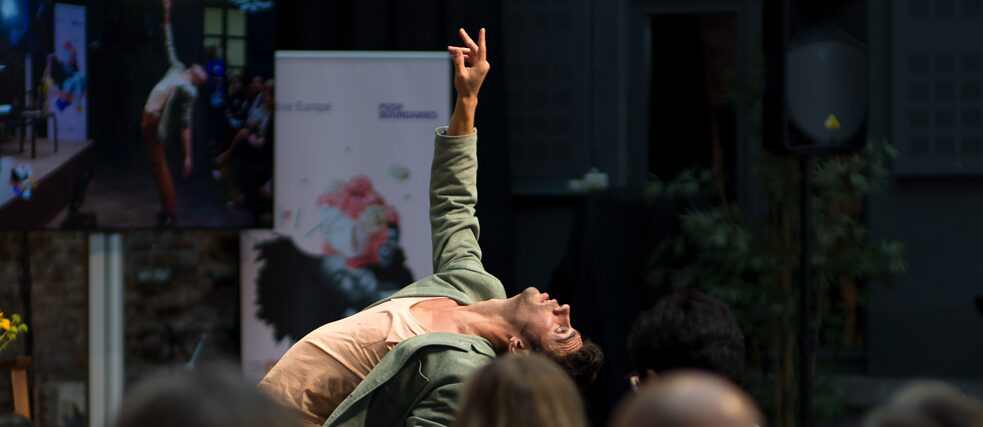Culture Moves Europe
Europe on the Move

How culture gets from A to B. With "Culture Moves Europe", the European Commission is launching a major mobility project for artists and cultural workers in Europe. It is being implemented by the Goethe-Institut.
“Culture Moves Europe” is the new, full-scale mobility scheme funded by the “Creative Europe” programme of the European Union and implemented by the Goethe-Institut. Mariya Gabriel, European Commissioner for Innovation, Research, Culture, Education and Youth, officially launched the scheme during a hybrid event in Brussels on the 10th of October 2022.
With a budget of €21 million from 2022 to 2025, Culture Moves Europe is the largest project run under the “Creative Europe” programme to date. It offers mobility grants to artists, cultural professionals and host organisations in all 40 “Creative Europe” countries and covers the sectors of architecture, cultural heritage, design and fashion design, literary translation, music, performing arts and visual arts. The scheme follows the successful i-Portunus pilot project that took place between 2018 and 2022.
“Culture Moves Europe” is composed of two action lines: “Individual Mobility” and “Residency”. Through the Individual Mobility Action, 6.000 artists and cultural professionals will be supported to carry out a project in another “Creative Europe” country. In addition, 1.000 grants will be distributed through the Residency Action, which will enable cultural centres to host residencies for international creatives.
Johannes Ebert, Secretary General of the Goethe-Institut, underlines the importance of “Culture Moves Europe” especially in challenging times: "With ‘Culture Moves Europe’, the European Commission is launching a major mobility scheme for cultural professionals in Europe. I see it as a great honour that the Goethe-Institut is entrusted with its implementation: After all, comparable programs have contributed significantly to developing a sense of community in Europe since the Second World War. Today, in the face of resurging nationalism, this has again become central. The fact that the EU is increasingly focusing on artists strengthens open exchange and debate and ultimately promotes freedom. This is also what the Goethe-Institut stands for, and this is why we are happy to contribute to the success of the project with our network throughout Europe."
Accessibility and inclusivity are core values in the implementation of Culture Moves Europe: The scheme aims to actively work towards gender and geographical balance amongst its grantees. It addresses artists previously underrepresented in cultural mobility schemes, including from remote and rural areas, Overseas Countries and Territories and Outermost regions of the European Union. Special support is granted to persons living with disabilities and those taking care of children, as well as for visa fees. Moreover, particular attention is given to emerging creators.
“Culture Moves Europe” is equally committed to sustainability and environmental responsibility. Air travel is not supported below a distance of 600km and where possible, green travel solutions are very much encouraged e.g. through financial top-ups. Next to the general relevance and degree of preparation of applicants’ projects, sustainability also plays an important role in the evaluation of applications. With its heightened attention to sustainability and inclusivity as well as its focus on emerging artists, Culture Moves Europe promises to take a lead in forging innovative ways forward for the cultural mobility sector.
This article was written by Jennifer Waag, Team Leader, and Magdalena Rausch, Communication and Outreach Officer for the Culture Moves Europe project.